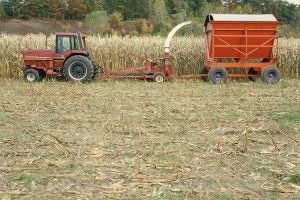As an agriculture community, we tend to do a lot of rubbernecking at days gone by. Not having quite as many decades under my belt as many of my peers, I never really understood that. That is until I started really paying some more mind to agricultural history, especially by those who lived it. It was only then did I have more appreciation for where we are now, what we might have been, and what might happen again.
Some of the more poignant ones come from the producers who had families that didn’t make it through the farm crisis of the 1980s. Until then, this period was always but a brief footnote in my mind of our great American ag history. For some reason, the Dust Bowl era always interested me more, despite it being more distant.
But now, I realize that the crisis our industry faced less than 50 years ago is what actually left the darker shadow, perhaps more so than we’d like to acknowledge.
Of all the things the ’80s were known for in mainstream culture, the farming situation isn’t usually the first thing to come to mind. Thanks to the farms that were able to keep on through the thick of it — and the growth of technology — many urban-dwelling Americans were spared the horror of food insecurity despite a severely beaten-down market.
The majority of non-rural America did not know the whole food industry was in the midst of a crisis that was its most severe since the Great Depression. The Midwest was one of the most significant areas hit by the slump, resulting in many families losing their farmland legacies forever and leaving huge, irreplaceable gaps in the farmscape.

In the decade prior, U.S. agriculture was graced with a period of prosperity, thanks in no small part to grain contacts with the Soviet Union. The years of 1973 and 1974 were especially notable, with farmers gladly responding to doubled wheat and tripled corn prices by increasing input.
As that decade closed out, however, the Federal Reserve amended its monetary policy, resulting in sky-high interest rates for Americans. Little did Capitol Hill realize just how much of a bust they were headed for after supporting the boom for so long. While these changes hit a lot of industries nationwide, agribusinesses and their lenders especially felt its crushing weight.
Parts of the Midwest saw their farmland values drop as much as 60 percent during this time. By the mid-’80s, national farm debt had doubled since 1978, and net farm income was only $5.4 billion, compared to the 1950 post-World War II heyday of nearly $20 billion.
On top of that, (thanks to the increased production only a few years prior) commodities plummeted in value, resulting in a massive glut and an export decline since the Soviet Union embargo.
Bear in mind, there was already an ongoing rural exodus, further weakening the ag economy. As a result, what was once 6.8 million farms in the mid-1930s had turned into only 2.2 million by the mid-1980s. And we’ve never come close to recovering that.
Adding all of those details together, it’s a pretty toxic cocktail, one that inevitably spelled the end to many multi-generational legacies as farm foreclosures became a common sight. While Congress ultimately had no choice but to intervene later in the decade, it was much too late to reclaim all that had been lost.
This might not be possible to prove, but I firmly believe that it was this era of hardship and industry-wide change that has impacted the collective notion of what the “family farm” is today.
For example, 1985 was the first Farm Aid concert, borne out of the issues of the day. Good intentioned at the time, of course, but since then, it’s become notably divisive among the ag community, spreading misinformation on GMOs and organic and pitting “family farms” against whatever “corporate” ones are supposed to be. I can’t help but feel this leaves the implication that the remaining farms that did what was necessary to survive — like get bigger, adopt new technologies, or change up infrastructure — deserve to be villainized whereas only those holding to certain traditions deserve to be praised.
The fact of the matter is the aftershock of what happened during those pivotal decades was inevitable. There is a full litany of criticisms the ag community faces — consolidation, fewer farms, more acreage and hefty barriers to industry entry — tracing back directly to the 1980s Farm Crisis.
There are no heroes or villains in this story — it’s simply a matter of history. Now we must do what we can with the landscape we have for a better future. Will we use it wisely?
Jaclyn Krymowski is a graduate of The Ohio State University with a major in animal industries and minor in agriculture communications. She is an enthusiastic “agvocate,” professional freelance writer, and blogs at the-herdbook.com.



